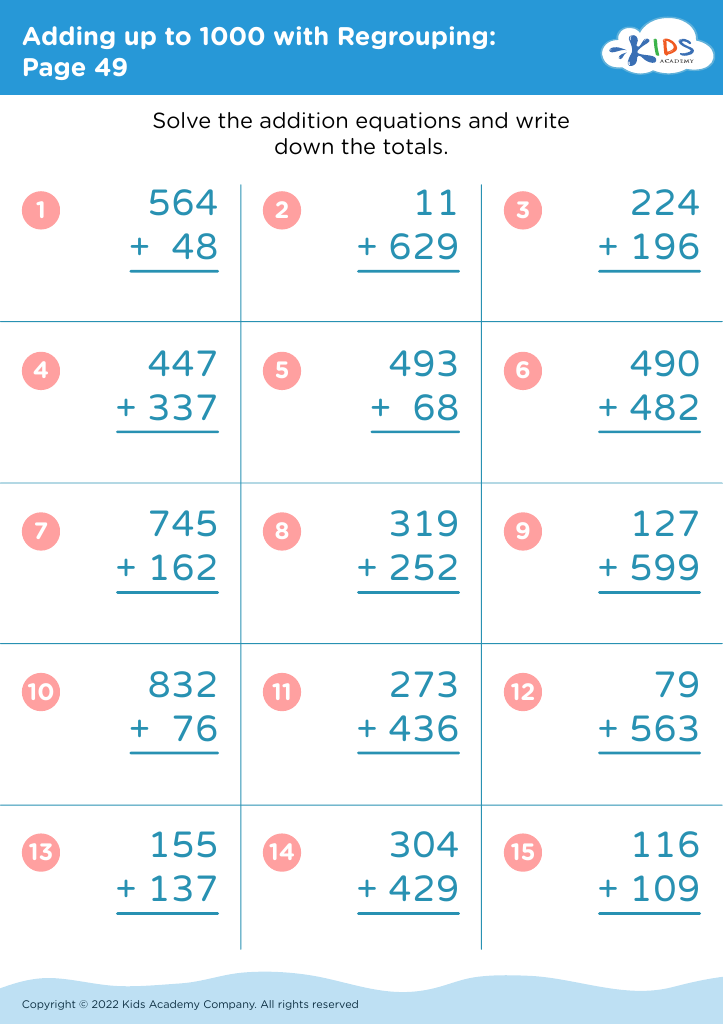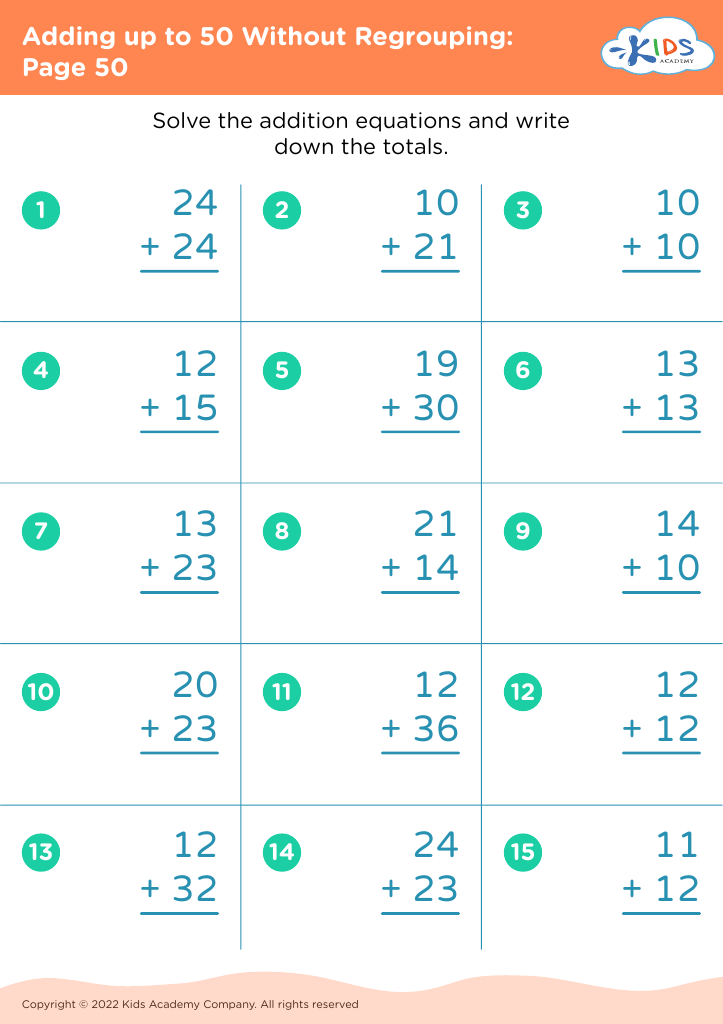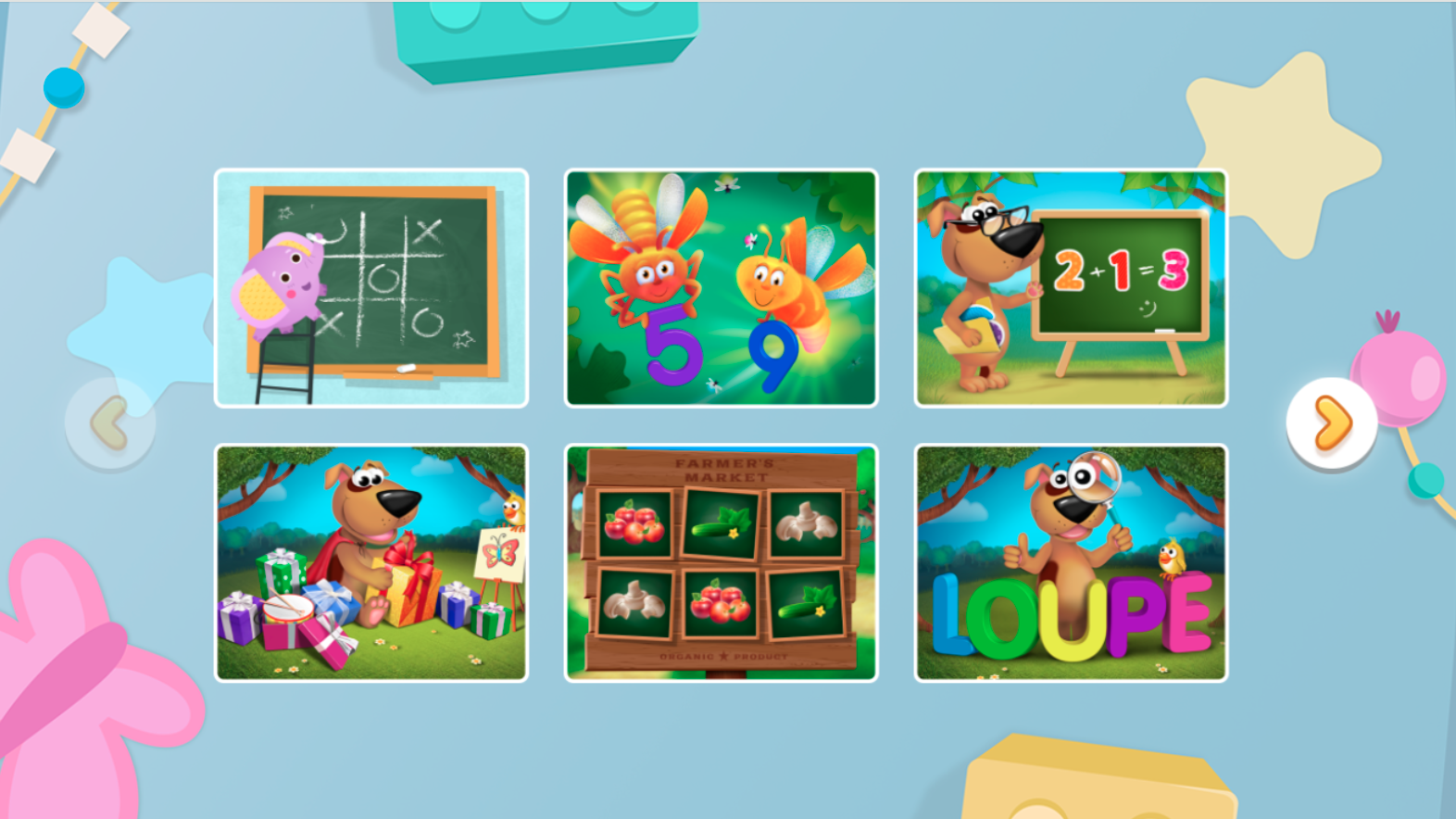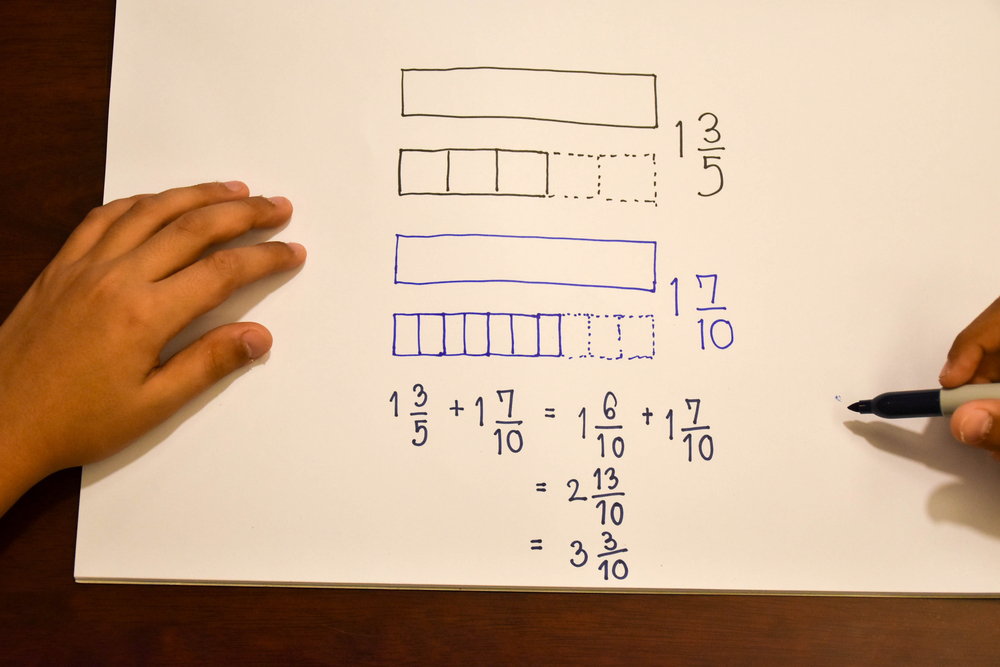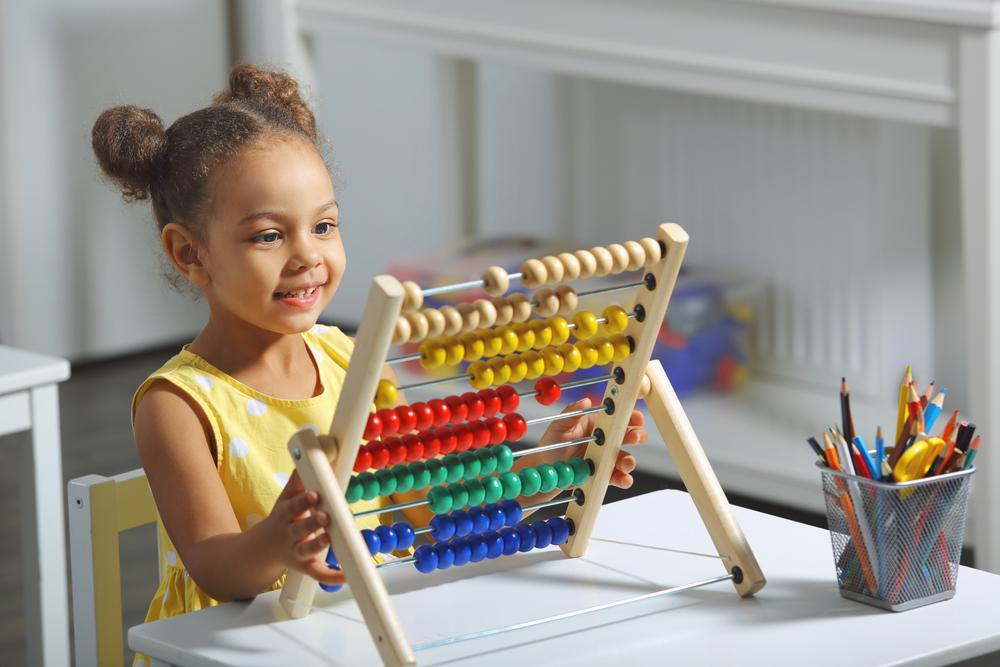Recognizing equivalent fractions Addition Worksheets for Ages 5-8
5 filtered results
-
From - To
Enhance your child's math skills with our "Recognizing Equivalent Fractions Addition Worksheets" designed for ages 5-8. These engaging worksheets help young learners identify and understand equivalent fractions while practicing addition. Each activity is curated to introduce the concept of fractions in a fun and interactive way, promoting confidence and proficiency in math. Ideal for both classroom and at-home use, our worksheets encourage critical thinking and problem-solving, laying a strong foundation for future mathematical success. Equip your child with the tools they need to excel in their studies with Kids Academy’s expert-crafted resources.
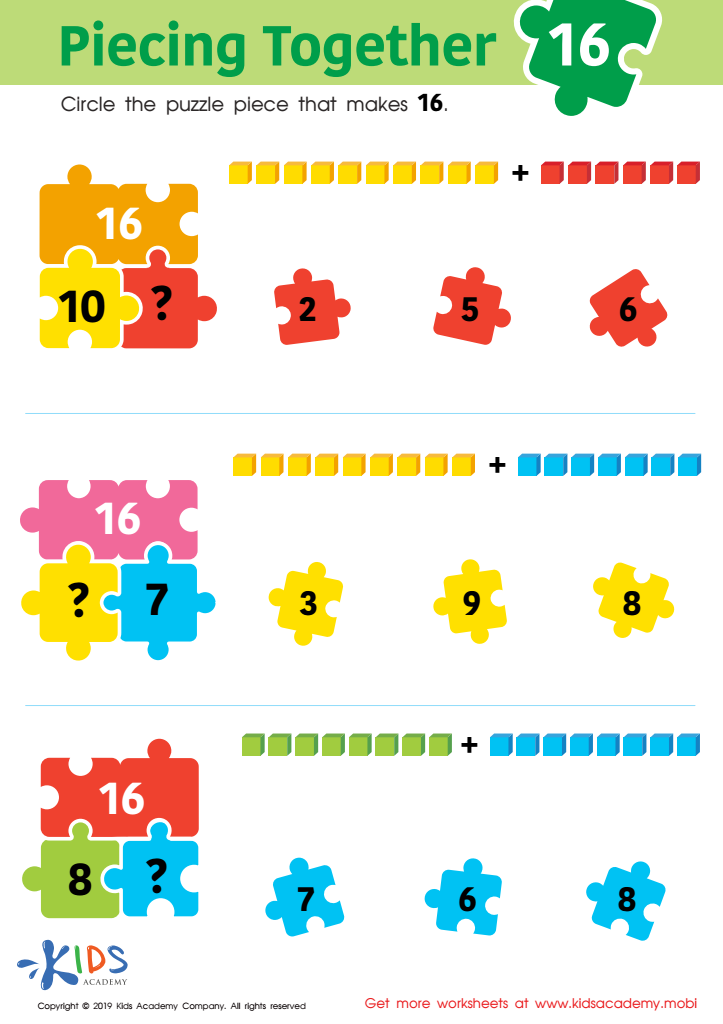

Piecing Together 16 Worksheet
Recognizing and understanding equivalent fractions is a foundational skill that benefits young children in many ways, making it essential for parents and teachers to focus on this concept. At ages 5-8, children are building their mathematical thinking, and grasping equivalent fractions can enhance their number sense. When children comprehend that different fractions can represent the same value (e.g., 1/2 is the same as 2/4 and 3/6), they develop a more flexible and intuitive understanding of numbers and proportions.
This knowledge is crucial for future math topics, including addition and subtraction of fractions, comparing fractions, and understanding ratios and proportions. Additionally, learning equivalent fractions lays the groundwork for more advanced mathematical concepts like algebra and geometry.
Moreover, recognizing equivalent fractions promotes critical thinking and problem-solving skills. It encourages children to look for patterns and relationships in numbers, boosting their overall cognitive development.
For teachers, incorporating fun, interactive activities such as visual aids, fraction strips, and engaging games can make learning about fractions more engaging. For parents, practicing with everyday objects like pizza slices, cookies, or pie can reinforce these concepts at home.
Overall, a solid grasp of equivalent fractions empowers children with confidence and the ability to succeed in future mathematical learning, making it an essential focus for early education.
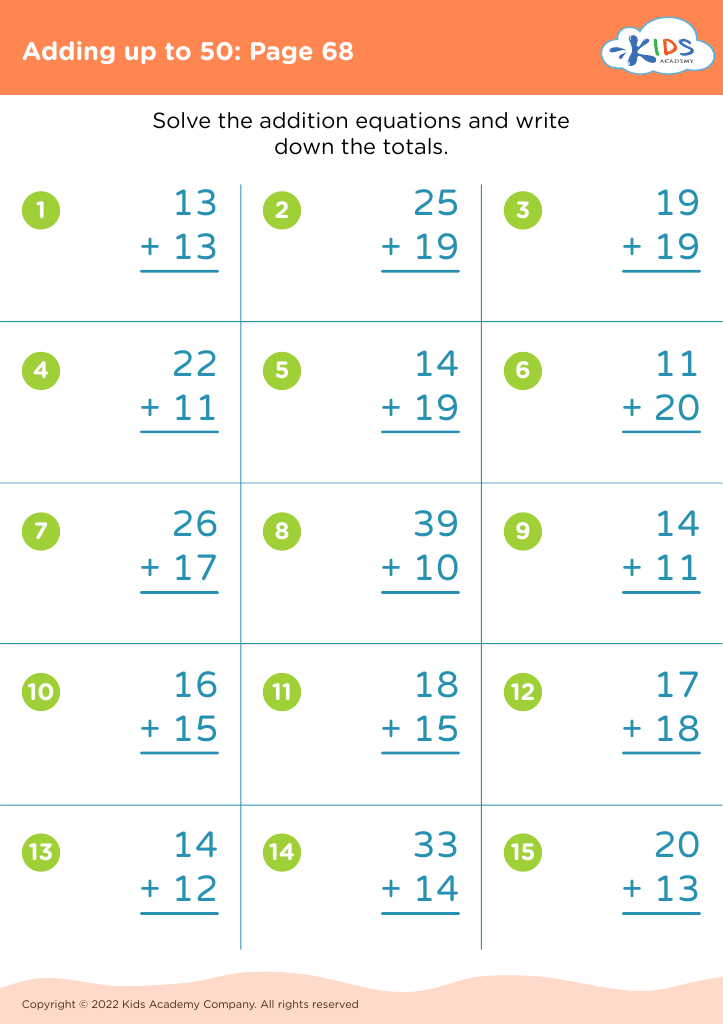

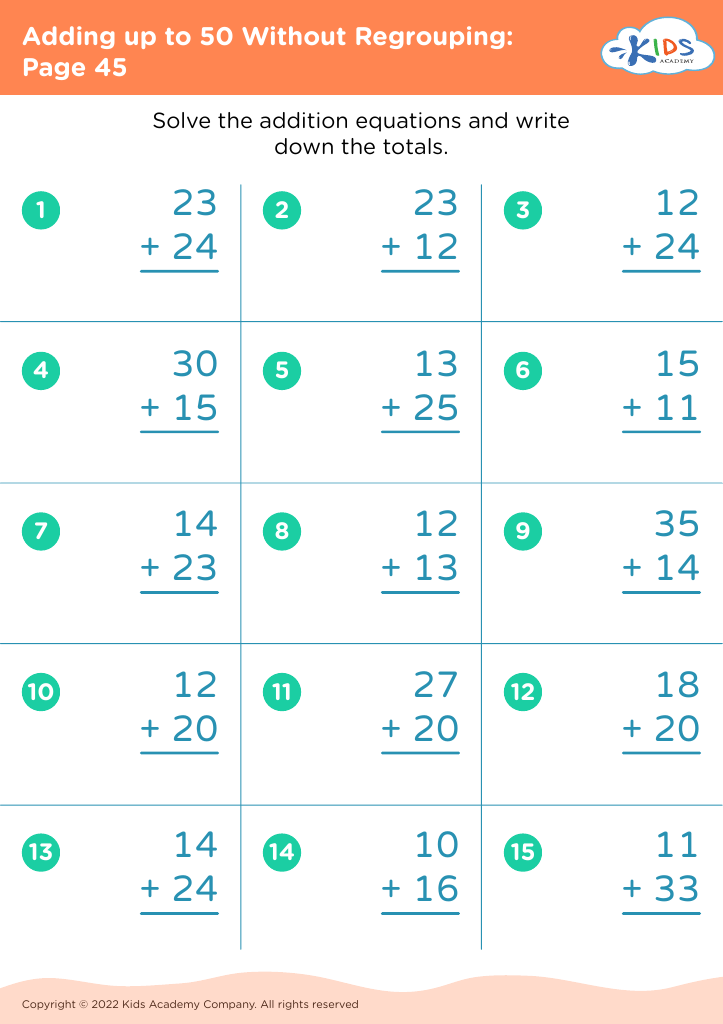
 Assign to My Students
Assign to My Students
